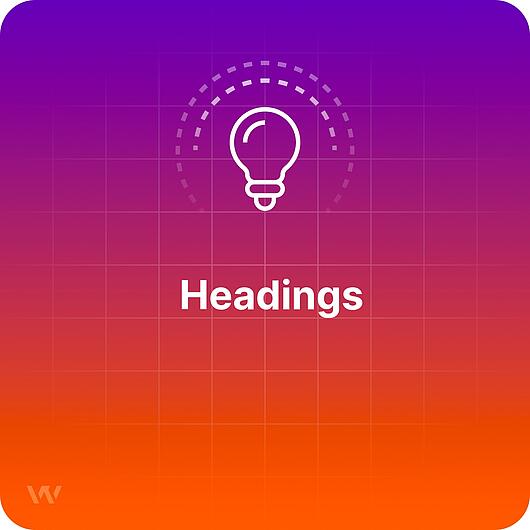- Why Us?
- Features
White Label
For SaaS Platforms & Agencies
Provide our complete analytics suite to your clients, directly within your own interface and with your/their own branding. Discover Analytics-as-a-Service and White Label Analytics. Great benefit, minimal effort.
- Pricing
- White Label
- Success Stories
- ResourcesGetting Started
Headings

TL;DR
Headings represent header tags used to structure a text in order to guide people and search engines through the page and to increase the accessibility of a page.
What is the heading?
Headings are also called header tags, and they help people and search engines understand a text easily by guiding them through the article or content.
Why and how to use headings on a website?
Header tags help structure the text, as they are very informative and indicate what a section or paragraph is about. This is a very easy and simple way to make the content more accessible and easier to read by visitors, and by crawlers that index the pages for search engines as well.
Most CMSs offer multiple heading levels, usually starting from Heading 1 (H1), up to Heading 6 (H6), with H1 representing the most important information - such as the title - and will be the biggest as well. As the heading number goes up, the importance and the text size will decrease.
A simple guideline on how to use headings within an article
- The H1 tag should be used for the page or article title, and you should only add the tag once per page. If the website is an e-commerce site, the H1 should be the product name on the product page.
- H2 and H3 tags are used to add subtitles or to introduce multiple sections and sub-sections within the same page or article.
- The text can go deeper in terms of sub-sections, but it is rare to use H4, H5, or H6 headings.
- Use the structure logically and add focus keywords that are relevant to the content.
Here's how to structure a page or post using headings logically
- H1: Smartphones are awesome!
- H2: 3 reasons we think smartphones are awesome
- H3: They are tiny computers in our pockets
- H3: They're suitable for more than just calling or playing
- H3: They're great tools to work with while on the go
- H2: 3 reasons we think smartphones are awesome

